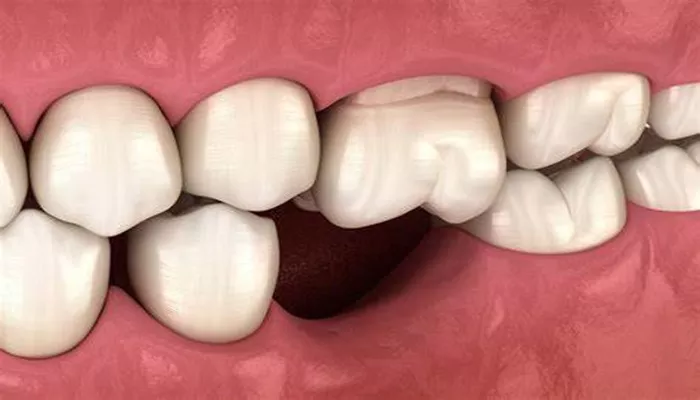Periodontal disease, also commonly referred to as gum disease, is a prevalent oral health issue that affects people worldwide. It encompasses a range of conditions affecting the gums, cementum, periodontal ligament, and alveolar bone that support the teeth. Understanding the nature and reversibility of mild periodontal disease is crucial for maintaining good oral health and preventing more severe consequences. This article aims to provide a detailed, subtitled, and easy-to-understand explanation of mild periodontal disease and its reversibility from a dental professional’s perspective.
Understanding Mild Periodontal Disease
Definition and Characteristics
Mild periodontal disease, typically referred to as gingivitis, is the earliest and most mild form of periodontal disease. It is characterized by inflammation of the gums, which can cause them to become red, swollen, and tender. Gingivitis is primarily caused by the accumulation of plaque, a sticky film of bacteria that forms on teeth and gums. If plaque is not removed through regular brushing and flossing, it can harden into tartar, which is more difficult to remove and can irritate the gums further.
Symptoms of Gingivitis
- Red, swollen, and tender gums
- Bleeding gums during brushing or flossing
- Bad breath
- Sensitivity to hot or cold foods and drinks
While gingivitis may not cause severe pain or discomfort in the early stages, it is a warning sign that more severe periodontal disease could develop if left untreated.
Reversibility of Mild Periodontal Disease
The reversibility of mild periodontal disease lies in its early diagnosis and prompt treatment. Gingivitis, being the mildest form, is highly reversible with proper oral hygiene practices and professional dental care.
How Gingivitis Can Be Reversed
Improved Oral Hygiene
Regular Brushing and Flossing: Brushing teeth at least twice a day with fluoride toothpaste and flossing daily can effectively remove plaque and tartar from teeth and gums. Proper brushing techniques, such as using a soft-bristled toothbrush and angling it at a 45-degree angle to the gums, can help clean hard-to-reach areas.
Antibacterial Mouthwash: Using an antibacterial mouthwash can help reduce the bacteria in the mouth and prevent plaque buildup. It is especially useful for those who have difficulty maintaining good oral hygiene due to medical conditions or disabilities.
Professional Dental Care
Regular Dental Check-ups: Scheduling regular dental check-ups and cleanings every six months can help detect and treat gingivitis early. During these visits, a dentist or dental hygienist will remove plaque and tartar that are difficult to clean at home and check for any signs of periodontal disease.
Scaling and Root Planing: If gingivitis has progressed to a more advanced stage, scaling and root planing may be necessary. This procedure involves using special tools to remove plaque and tartar from below the gum line and smoothing the tooth roots to prevent bacteria from adhering to them.
Dietary and Lifestyle Changes
Healthy Eating Habits: Eating a balanced diet rich in vitamins and minerals, especially vitamins C and D, can support gum health. Avoiding sugary snacks and drinks can reduce the risk of plaque formation.
Quitting Smoking: Smoking is a major risk factor for periodontal disease. Quitting smoking can improve gum health and reduce the risk of developing more severe periodontal disease.
Stress Management
Chronic stress can weaken the immune system and make it harder for the body to fight off infections, including gum infections. Practicing stress-reducing techniques, such as meditation, yoga, or deep breathing exercises, can help improve overall health and support gum health.
The Role of Professional Dental Treatments
In some cases, mild periodontal disease may require professional dental treatments to reverse the inflammation and damage to the gums. These treatments may include:
Antibiotics: Prescription antibiotics may be necessary to kill the bacteria causing the infection and reduce inflammation.
They can be taken orally or applied directly to the gums in the form of a gel or mouthwash.
Laser Therapy: Laser therapy is a relatively new treatment option for mild periodontal disease. It uses laser light to remove plaque and tartar and stimulate gum tissue healing. This treatment is typically less invasive and painful than traditional scaling and root planing.
Arestin® (Minocycline HCl) Microspheres: Arestin is a localized antibiotic therapy that is placed directly into the periodontal pocket during scaling and root planing. The microspheres release minocycline slowly over time, killing bacteria and reducing inflammation.
Preventing the Recurrence of Mild Periodontal Disease
Reversing mild periodontal disease is only the first step in maintaining good oral health. To prevent the recurrence of gingivitis and the development of more severe periodontal disease, it is important to:
- Maintain good oral hygiene practices by brushing and flossing regularly.
- Schedule regular dental check-ups and cleanings every six months.
- Eat a balanced diet rich in vitamins and minerals.
- Avoid smoking and excessive alcohol consumption.
- Manage stress through healthy lifestyle choices.
Conclusion
In conclusion, mild periodontal disease, or gingivitis, is highly reversible with proper oral hygiene practices, professional dental care, and dietary and lifestyle changes. Early diagnosis and prompt treatment are crucial for reversing the inflammation and damage to the gums and preventing the development of more severe periodontal disease. By maintaining good oral hygiene practices and scheduling regular dental check-ups, individuals can reduce their risk of developing periodontal disease and maintain a healthy smile for life.
Related topics:

